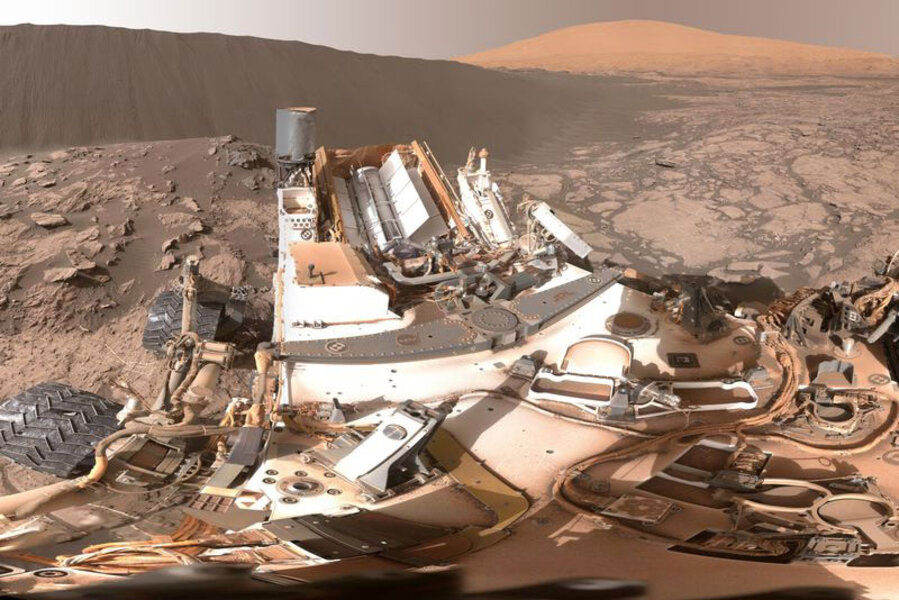NASA and Facebook team up to offer taste of what it's like to stand on Mars
Loading...
NASA, with the help of Facebook, has made it possible to view a 360 degree video of the Martian terrain through the eyes of its intrepid rover, Curiosity.
The space agency used technology created by the social network to string together 57 images taken by NASA's Mars Curiosity rover while it was examining dunes along the Bagnold field on the Red Planet, which is along the rover's route up the lower slope of Mount Sharp. These dunes surround the mountain's northwestern edge, with some as tall as a two-story building and wide as a football field, according to NASA.
Images from orbit indicate some of the dunes are moved by wind as much as about 3 feet per Earth year.
Curiosity has been studying Mount Sharp since 2014, after two years of exploring the plains surrounding the mountain, as The Christian Science Monitor has reported.
NASA has made a point to bring Americans virtually along many of its expeditions as part of its recent media blitz designed to drum up public support for its programs. NASA's animated video depicting the New Horizons spacecraft's flyover Pluto has been viewed more than 3 million times since the space agency posted it to YouTube in July. In just the past week, a similar animation of the Dawn spacecraft flying over the dwarf planet Ceres has garnered more than 500,000 views on YouTube. But this video is particularly unique.
The 360-degree video offers not just the first close look at extraterrestrial active sand dunes, but also offers an early look at immersive video experience, dubbed “360° Video,” that Facebook launched in news feeds this fall. It’s a precursor to the company’s virtual reality capabilities.
“This is just the beginning of what we can do with virtual reality and 360 video,” Mark Zuckerberg, Facebook founder and CEO, wrote in a Facebook post on his personal page, advertising the NASA video yesterday.
“Pretty amazing,” he said.
Facebook developed the 360° video technology after it bought virtual reality company Oculus in March 2014. The company is releasing a virtual reality headset, called Oculus Rift, in March.





